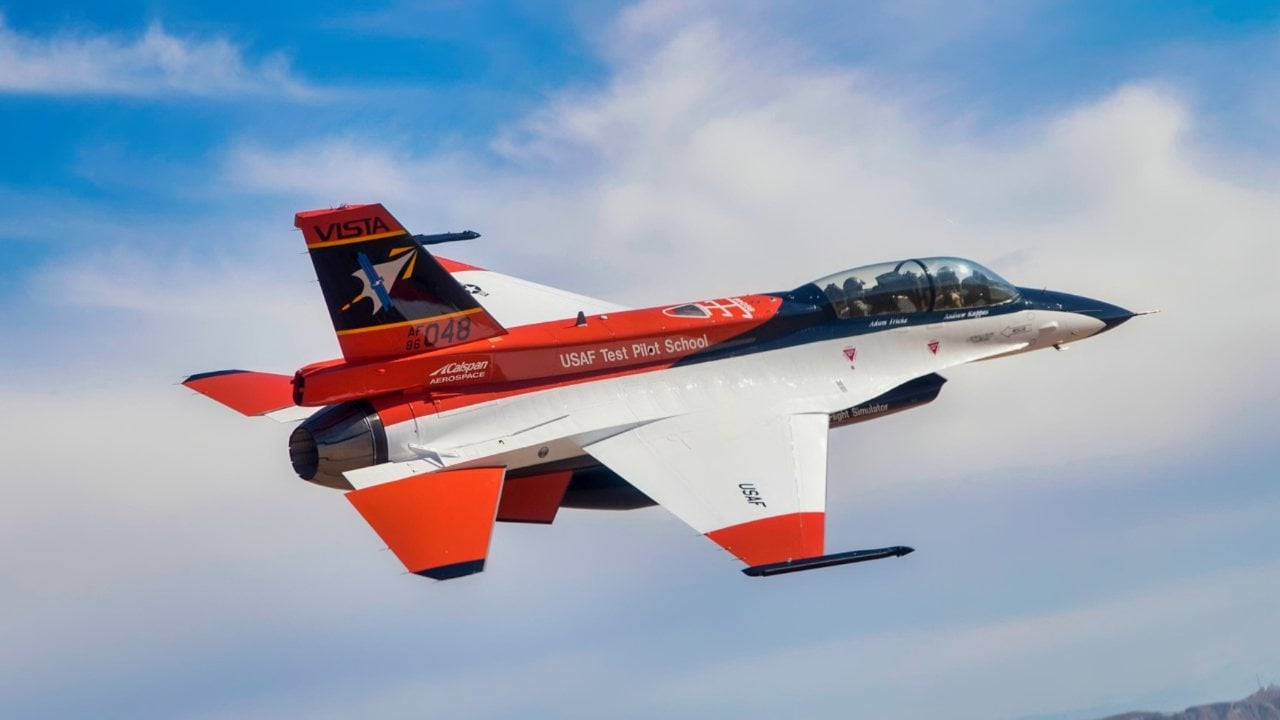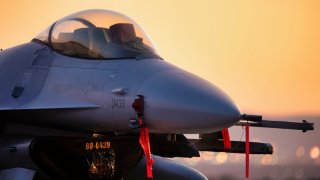The Age of the F-16 Fighter Is Coming To An End
The F-16 Fighting Falcon, a legendary U.S. Air Force warplane, has served since 1978 and remains a favorite worldwide. However, with the rise of fifth-generation aircraft like the F-35 and the advancing capabilities of global competitors, the F-16's era is ending.
Summary and Key Points You Need to Know: The F-16 Fighting Falcon, a legendary U.S. Air Force warplane, has served since 1978 and remains a favorite worldwide. However, with the rise of fifth-generation aircraft like the F-35 and the advancing capabilities of global competitors, the F-16's era is ending.
-Despite ongoing upgrades, including a Service Life Extension Program, the F-16 is reaching the limits of its potential against modern air defense systems.
-While these enhancements keep the fleet operational, the Air Force must prioritize new technologies like drones, directed-energy weapons, and hypersonic systems to stay ahead in a rapidly evolving threat landscape.
Is the F-16’s Reign Finally Coming to an End?
The U.S. Air Force has a remarkable plane in its arsenal. It has served this country for decades and continues to prove itself a useful weapons platform, so much so that countries all over the world love this warbird. I’m not talking about the fifth-generation warplanes, the F-35 Lightning II or the F-22 Raptor. Instead, I’m referring to the ubiquitous F-16. Having first entered service in August of 1978, multiple variants of this warplane, with various advanced upgrades, have dotted the war-torn skies of our pale blue dot.
But the days of the F-16’s kingship are coming to an end, mainly because of the advent of the fifth-generation warplane. Sure, the life expectancy of F-16s was extended beyond what the designers had originally intended. This was primarily due to technical complications and cost overruns in the F-35 and F-22 programs.
Reaching the End of Utility for the F-16
At some point soon, though, even the extension on these magnificent planes will be insufficient to compete not only with the fifth-generation warplanes of the world. (.Russia and China have their own versions, and multiple other countries, like Turkey, are working on one.)
This is why so many F-16 pilots in the United States are being inducted into the F-35 training program at Luke Air Force Base in Arizona. Many pilots who spent their careers flying the F-16 are either asking or being asked to abandon their beloved birds in favor of learning to fly the F-35, which will outlast the F-16 by years.
The reason for this gradual shift – one that will become more prevalent in years to come – is that the F-16 has reached the limit of possible upgrades.
Sure, the Air Force has plans to keep these birds flying until the 2040s. Ditto with the F-15 and F-18 fleets.
But as the primary fighter for the Air Force? No.
F-16s are currently receiving a major overhaul. (They have reached 50 years of age, after all, and remain flying.) The process is conducted by the Post Block Integration Team run through the Air Force Life Cycle Management Center’s Fighters and Advanced Aircraft Directorate.
The Air Force plans to make an astonishing 22 modifications to F-16 Block 40 and 50 birds. The upgrades are being conducted concurrently with a Service Life Extension Program to “extend the airframes’ fatigue life from 8,000 to 12,000 hours.”
Certainly, the F-16 is probably the greatest warplane the Air Force has ever fielded, what with its long lifespan, easy flight controls, and versatility in combat. Its stellar combat record reflects this excellence.
But it is still a fourth-generation warplane living in a fifth-generation world.
Never Forget: Version 1.5 is NOT the Same as Version 2.0
What’s more, these birds are being made to contend with air defense systems that are lightyears beyond what they were when the F-16 was first developed. Because of sheer numbers, the Air Force can ill-afford to retire these birds en masse. Upgrading them makes sense. But there are limits to what can be upgraded. Ultimately, version 1.5 of an operating system is still closer to the initial version than it is to version 2.0.
This is no different.

America’s F-16 warplane is an iconic warbird reaching the limits of what it can do when arrayed against the constantly evolving modern threat environment. The upgrades made to the F-16 will likely be unable to keep pace with those constantly changing threats.
A better use of money would be to invest in a larger drone capability, to build Directed-Energy Weapons, and for the Air Force to finally create hypersonic weapons of both offensive and defensive natures.
The future is here. America is not prepared. Enhancing old platforms like the F-16, will not work. And continuing with the trend of augmenting the manned warplane model is insufficient. We’ve got to go bigger and be more innovative than our enemies. Time is not on America’s side.
Author Experience and Expertise: Brandon J. Weichert
Brandon J. Weichert, a National Interest national security analyst, is a former Congressional staffer and geopolitical analyst who is a contributor at The Washington Times, the Asia Times, and The-Pipeline. He is the author of Winning Space: How America Remains a Superpower, Biohacked: China’s Race to Control Life, and The Shadow War: Iran’s Quest for Supremacy. His next book, A Disaster of Our Own Making: How the West Lost Ukraine, is due October 22 from Encounter Books. Weichert can be followed via Twitter @WeTheBrandon.
All images are Creative Commons or Shutterstock.
From the Vault
Russia Freaked Out: Why the U.S. Navy 'Unretired' the Iowa-Class Battleships
Battleship vs. Battlecruiser: Iowa-Class vs. Russia's Kirov-Class (Who Wins?)


